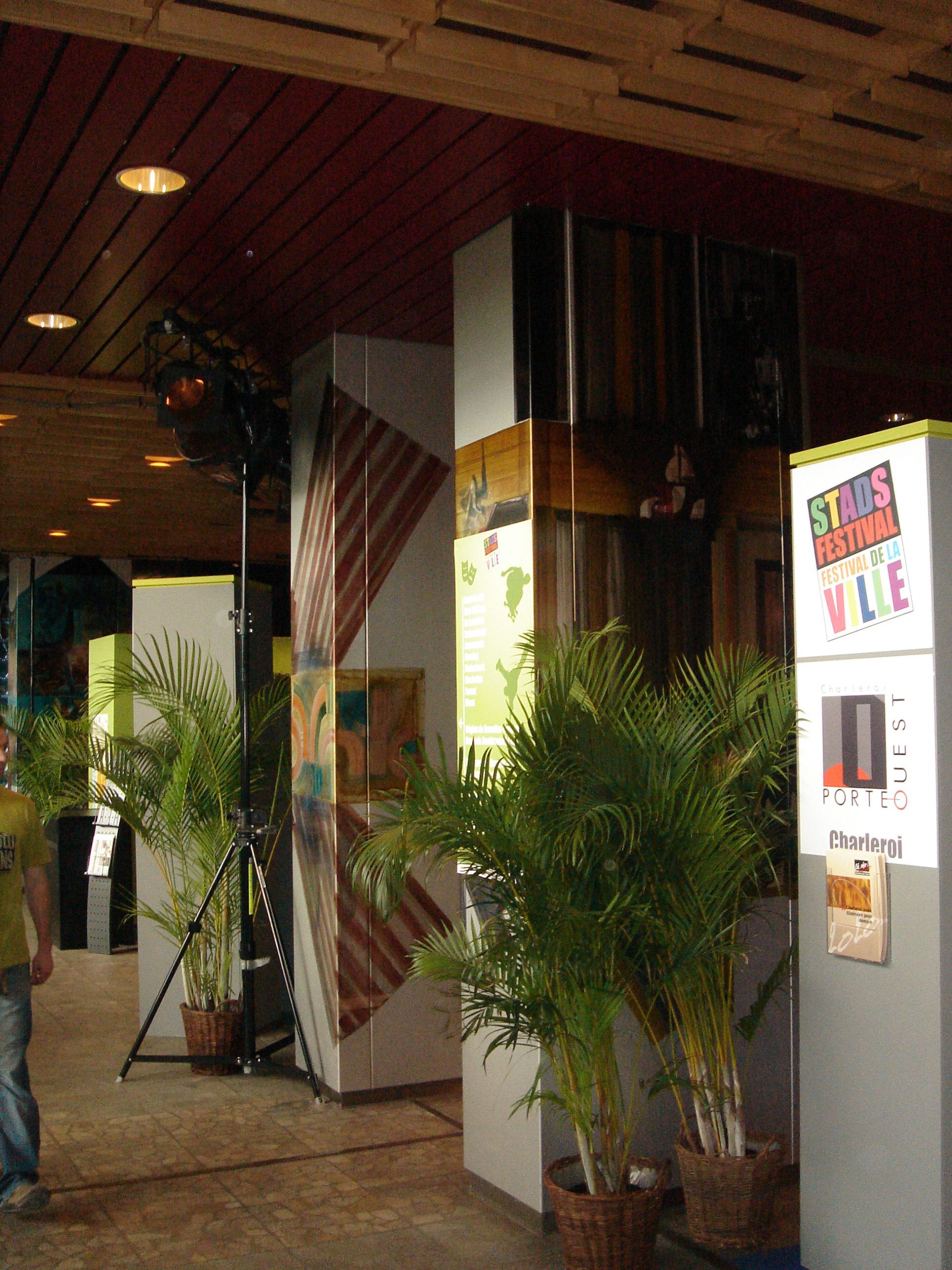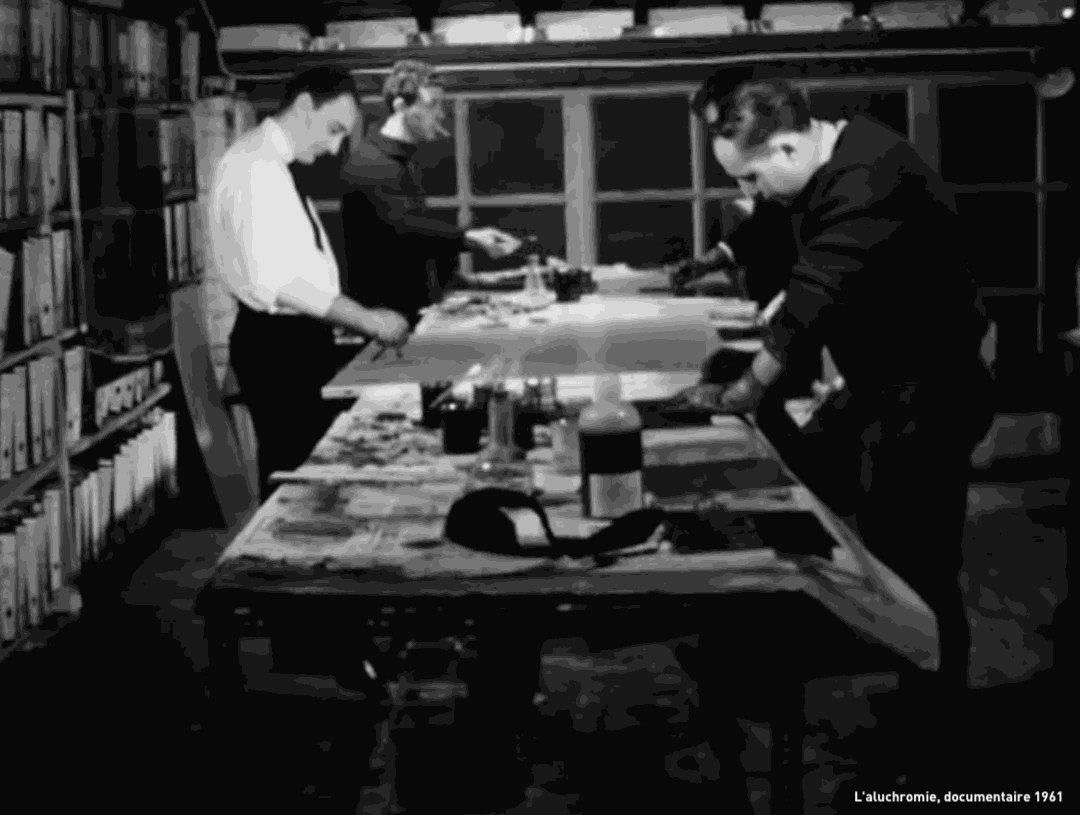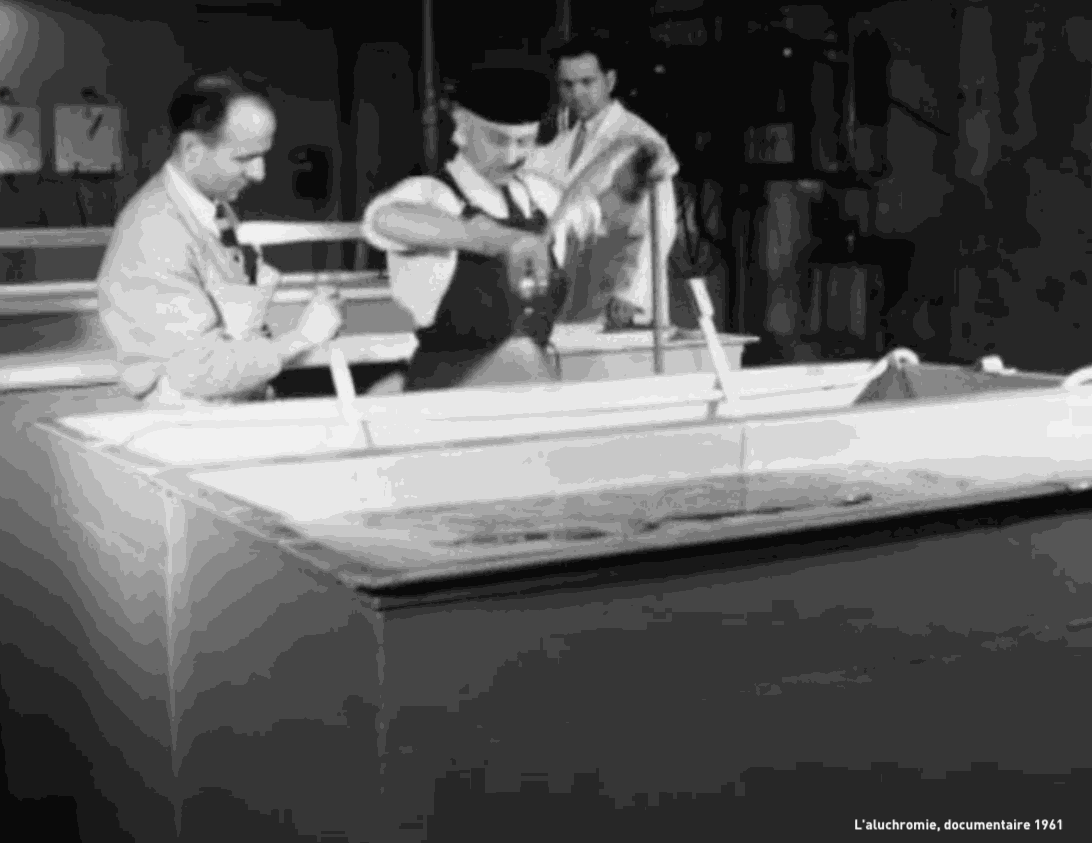Incoming
Aluchromie panels by Ralph Cleeremans
18/09/2024
Aluchromie is a technique to fixate pigments on aluminium developed around 1961 by Ralph Cleeremans and Pierre Leloup. That same year, the “Group of Belgian Aluchromists” would be founded, including members such as Walter de Buck, Carlo Crivellaro, Octave Landuyt, and Serge Vandercam. With help of the engineers of BASF, the technique would be further refined. Their first joint work was a cube of 4 meters, to be exhibited on the Rogier square in Brussels. While the group never came to a joint artistic language other than sharing a technique, a manifesto was produced calling for a new form of beauty, coherent with the means of the time and allowing for an experience of the future.
In interviews, Ralph Cleeremans mentions the influence of the Brussels World Exhibition of 1958. In the preparation for this event, and in the following years, the scale of architectural intervention in Brussels had changed drastically. Major infrastructural works were taking place and large buildings were being erected. Using aluminium as a canvas allowed the Aluchromists to conceive of new ways to integrate their art in these projects.
In 1963, the Aluchromists started working on a series of works for integration in the Rijks Administratief Centrum (RAC), a building so big (141.621 m²) that it received its own postal code. Part of the intervention took place on the elevator doors that were decorated by Jean-Marie De Busschère. Ralph Cleeremans produced a series of panels for the cantine, designed to accommodate the Cité’s 14.000 workers. The works were lining the columns of the mezzanine. In 1966 the group is disbanded as disagreements rise because the state never paid for the works produced.
In 2003, the Federal state decided to abandon and sell off the property. The regionalisation of several departments had made the building to big for the Federal state alone. Renovation would have to include the removal of asbestos. In 2006, Ralph Cleeremans was invited by the new owner to retrieve from the building the panels he had produced, but had never been paid for. The elevator doors, lined in asbestos, were unsalvageable, but with help of a few friends the artist demounted the panels that lined the columns. They would be stored temporarily in the workshop of an artist friend, were they ended up staying a full decade.
RotorDC was contacted to help find a suitable destination for 16 series of panels. We invite all interested parties to contact us to discuss conditions and ideas. An overview of the panels and their measurements can be found here.
Nous avons travaillé avec la volonté de dégager la peinture des limites que lui avaient imprimées le monde passé, et de lui ouvrir des perspectives à la mesure du monde moderne.
La science et l’architecture, par leur évolution d’une rapidité extraordinaire, nous indiquaient d’autant plus ce retard de le la peinture sur l’évolution actuelle.
Des matériaux tels que la toile, la fresque, la céramique, la mosaïque ne répondaient plus que bien faiblement aux exigences tant techniques qu’esthétiques de l’environnement moderne.
Il fallait, avant tout, se mettre a l’école de la science et rechercher des matériaux nouveaux, ceci non point dans un but d’originalité ou d’excentricité, mais en vue de solutions durables et efficaces.
Nous avons d’abord dû nous libérer de ces complexes d’artistes individualistes qui avaient séparé l’art du monde pour en faire l’exclusivité des initiés. Nous avons tenté de nous ouvrir à la vie contemporaine, de partager la pensée, les désirs des constructeur de l’humanité de demain.
La solution technique fut « l’Aluchromie » procédé de coloration de l’aluminium dans sa couche d’oxyde après électrolyse, au moyen de pigments spéciaux, liquides, applicables au pinceau, à la plume, ouate ou tout autre système possible ou imaginable. La fixation des couleurs provient du fait qu’après coloration de la couche d’oxyde, l’on resserre les cristaux de celle-ci par immersion dans un bain de colmatage.
Cette technique ne comporte aucune limitation de couleur, de graphisme, de nuance, elle est directe autant que peut l’être l’aquarelle. Le bain final ne modifie point les teintes ou les formes. Par juxtaposition des panneaux d’aluminium, toutes dimensions sont rendues possibles. De plus, cette technique est aussi surprenante par son utilisation en petit format que par ses applications monumentales. Elle peut aussi bien servir à une réalisation de bijoux, de graphismes, d’œuvres de chevalet, de maquettes qu’à l’exécution d’œuvres architecturales s’adaptant aux dimensions des immeubles actuels.
L’aluminium, de plus, de par son existence à peine centenaire et ses propriétés prodigieuses, intégral produit de la science, est un peu l’emblème, le symbole des perspectives futures de notre civilisation.
Métal réellement moderne comme support de la peinture moderne.
Manifeste (attributed to Roger Van Loo, 1961)
See available products
More information:
L’aluchromie, a 1961 documentary made by the Belgian national television
Aluchromisten, entry on the German spoken wikipedia
More information:





